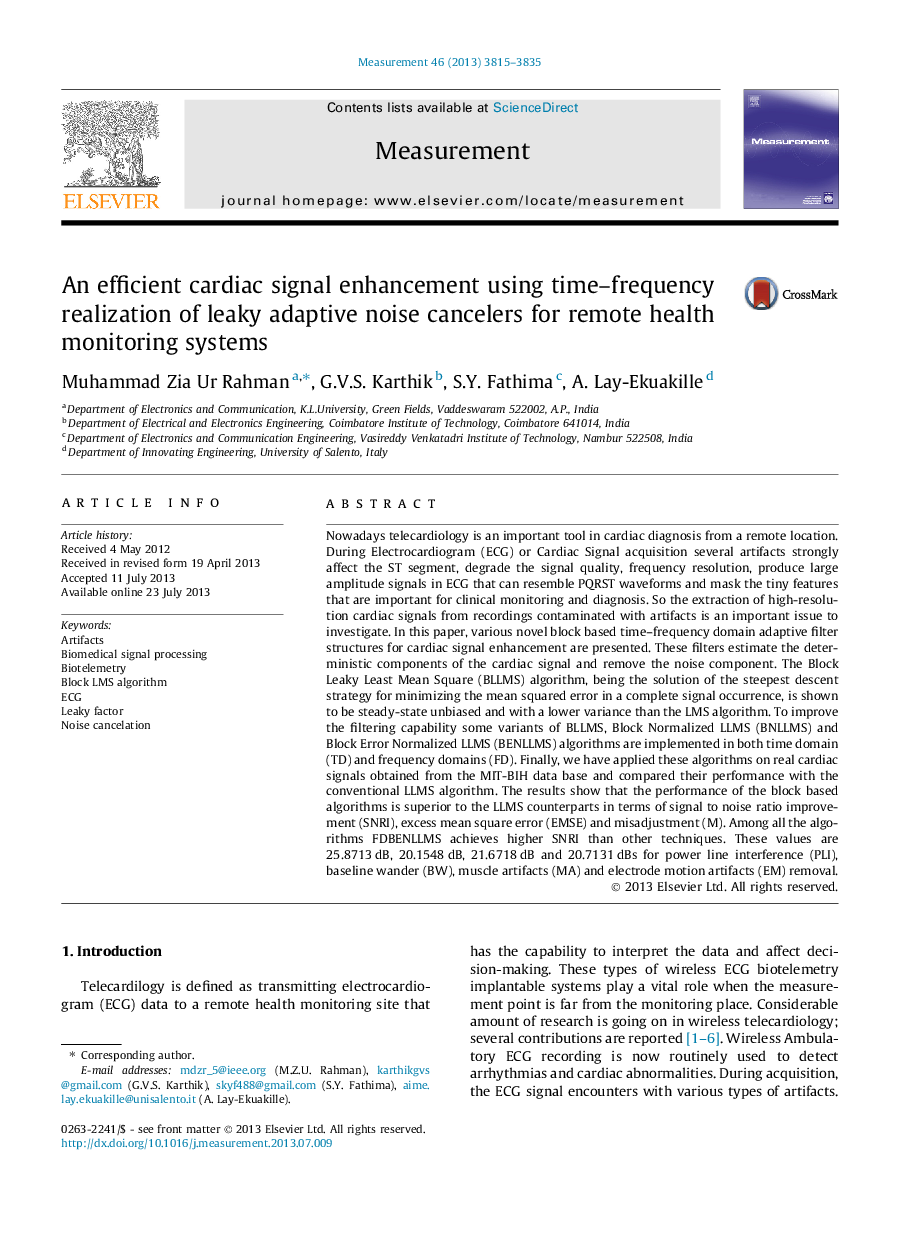| کد مقاله | کد نشریه | سال انتشار | مقاله انگلیسی | نسخه تمام متن |
|---|---|---|---|---|
| 731280 | 893047 | 2013 | 21 صفحه PDF | دانلود رایگان |

• In cardiac diagnosis high resolution ECG signals are required, but during acquisition several artifacts contaminates the ECG signals.
• In practical cases the ECG signal length is excessively large. This results in increase in filter length.
• In order to decrease filter length we propose block processing of noisy ECG signal.
• These block filters are developed and tested in both time domain and frequency domain.
• The results conclude that frequency domain noise cancelers perform better than time domain.
Nowadays telecardiology is an important tool in cardiac diagnosis from a remote location. During Electrocardiogram (ECG) or Cardiac Signal acquisition several artifacts strongly affect the ST segment, degrade the signal quality, frequency resolution, produce large amplitude signals in ECG that can resemble PQRST waveforms and mask the tiny features that are important for clinical monitoring and diagnosis. So the extraction of high-resolution cardiac signals from recordings contaminated with artifacts is an important issue to investigate. In this paper, various novel block based time–frequency domain adaptive filter structures for cardiac signal enhancement are presented. These filters estimate the deterministic components of the cardiac signal and remove the noise component. The Block Leaky Least Mean Square (BLLMS) algorithm, being the solution of the steepest descent strategy for minimizing the mean squared error in a complete signal occurrence, is shown to be steady-state unbiased and with a lower variance than the LMS algorithm. To improve the filtering capability some variants of BLLMS, Block Normalized LLMS (BNLLMS) and Block Error Normalized LLMS (BENLLMS) algorithms are implemented in both time domain (TD) and frequency domains (FD). Finally, we have applied these algorithms on real cardiac signals obtained from the MIT-BIH data base and compared their performance with the conventional LLMS algorithm. The results show that the performance of the block based algorithms is superior to the LLMS counterparts in terms of signal to noise ratio improvement (SNRI), excess mean square error (EMSE) and misadjustment (M). Among all the algorithms FDBENLLMS achieves higher SNRI than other techniques. These values are 25.8713 dB, 20.1548 dB, 21.6718 dB and 20.7131 dBs for power line interference (PLI), baseline wander (BW), muscle artifacts (MA) and electrode motion artifacts (EM) removal.
Journal: Measurement - Volume 46, Issue 10, December 2013, Pages 3815–3835